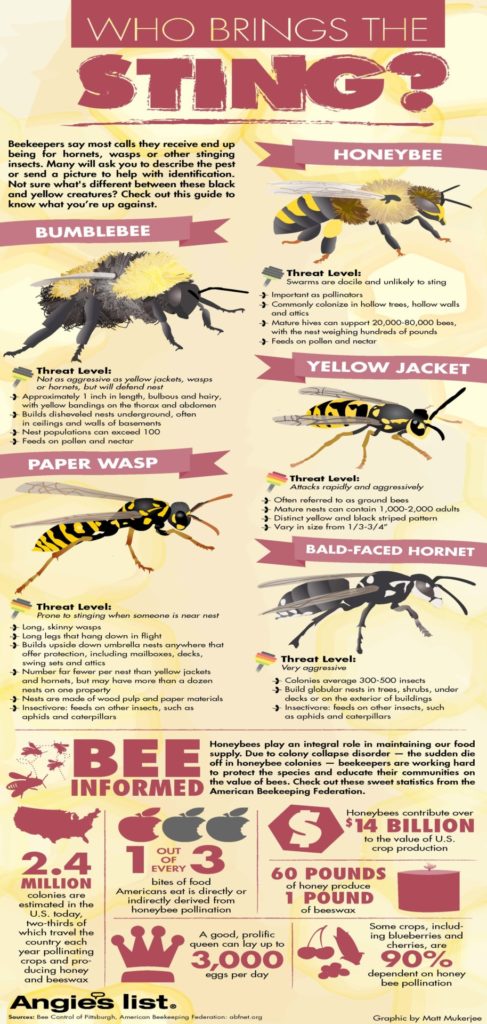
If you ate a vegetable or fruit today, chances are you can thank a bee. Honey bee pollination is directly responsible for one-third of all food we eat, according to the American Beekeeping Federation. Now, Colorado State University is deliberately planning strategies to help the local bee population, while being careful to manage honeybee interactions on campus.
The initiative to support pollinators will be the work of a committee that will focus on developing a pollinator-friendly habitat plan, such as planting pollinator plants in campus landscapes and designating a few choice beds as pollinator beds, expanding the diversity of trees on campus, engaging the campus in pollinator education, and seeking a “Bee Friendly Campus” designation.
“Public universities have the opportunity to demonstrate good stewardship of the environment and to create teaching landscapes – landscapes that educate the campus community about the underlying function of their campus,” said Fred Haberecht, assistant director of Facilities Management, and chair of the committee working on the initiative. “Colorado State University is meeting both objectives with the Clark pollinator garden. It is a small effort in a highly public space that both supports a more diverse campus ecosystem, and demonstrates and interprets the use of pollinator plants in the landscape.”
A flowerbed near the Clark Building is currently being renovated to provide pollinator-attracting plants, such as catmint, verbena, English lavender, beebalm, spirea and black-eyed Susans. Along with flowers, it sports signs that help educate the campus community about pollinators.
“One of the goals of the flowerbeds is to provide nutrition to pollinators throughout the seasons, from early spring to late fall,” said Arathi Seshadri, assistant professor in the Department of Soil and Crop Sciences. “Different plant species in the bed will come into bloom at different times of the year, early spring through fall. We also wanted to attract different kinds of pollinators including butterflies, moths, flies, hummingbirds and bees. Their preferences depends on flower color, shape, fragrance, pollen and nectar. We chose different plants to provide a mix that is attractive to all pollinators and a mix of perennial and annual flowers that will grow well in this location and require a minimal investment.”
The garden will begin blooming next spring, when pollinators come out of hibernation, according to Holly Miller, a horticulture technician with Facilities Management. It will even include “bee hotels,” which are structures that help support the larva stage of a bee’s reproductive cycle, as well as shelter and water for pollinators. Flowers in the bed will bloom until the first frost.
About honey bees and other pollinators
These fuzzy little insects lead incredible lives, with worker honey bees flying 1 ½ times the circumference of the earth in their short, six-eight week lives. All that work adds up, with bee pollination contributing more than $19 billion (that is billion with a “bee”) in crop production. At least 80 percent of the world’s crop species require insect pollination for seeds to grow into plants.
“In addition, pollinated crops provide food for the livestock and dairy industry,” said Lisa Mason, a graduate student in the Department of Bioagricultural Sciences and Pest Management. “More than 75 percent of the plants on the planet rely on pollinators for reproduction. Bees are the most efficient pollinators.
“Bees are a critical part of our food supply. We need to better understand the impacts of urbanization and habitat loss on bees, especially native bees. Colorado has more than 900 species of bees. While honey bees are the most common insect pollinators, other native bees help pollinate crops and wild flowers.”
Other important pollinators include ants, some types of wasps, flies, butterflies, moths, flower beetles, bats, rodents, birds and some kinds of lizards.
Obtaining official bee-friendly status
As part of the initiative to seek Bee Campus USA status, which recognizes campuses across the nation for creating habitats for pollinators and providing public education, the university is developing a pollinator-friendly habitat plan, plant list to select from for campus pollinators for flowerbeds, and public educational information about ways to support pollinators on and off campus.
The university currently partners with the city to provide public workshops and continuing education related to pollinator ecology, landscaping for pollinators, and courses to manage pests without adversely impacting pollinators.
The campus bee committee includes university bee researchers, Facilities Management and Environmental Health Services. It is a subgroup of the President’s Sustainability Committee, which involves students and employees representing various units on campus.
Campus response to nuisance insects
In addition to enhancing pollinator activity on campus, the university has a response plan for swarming or nuisance insects. Anyone concerned about bee swarms, which are more common starting in February through spring, or nuisance bees, wasps or hornets, should contact Environmental Health Services. Environmental Health Services will consider next steps, which could include calling beekeepers for assistance in removing a swarm.
Report swarms on campus: 970-491-6745